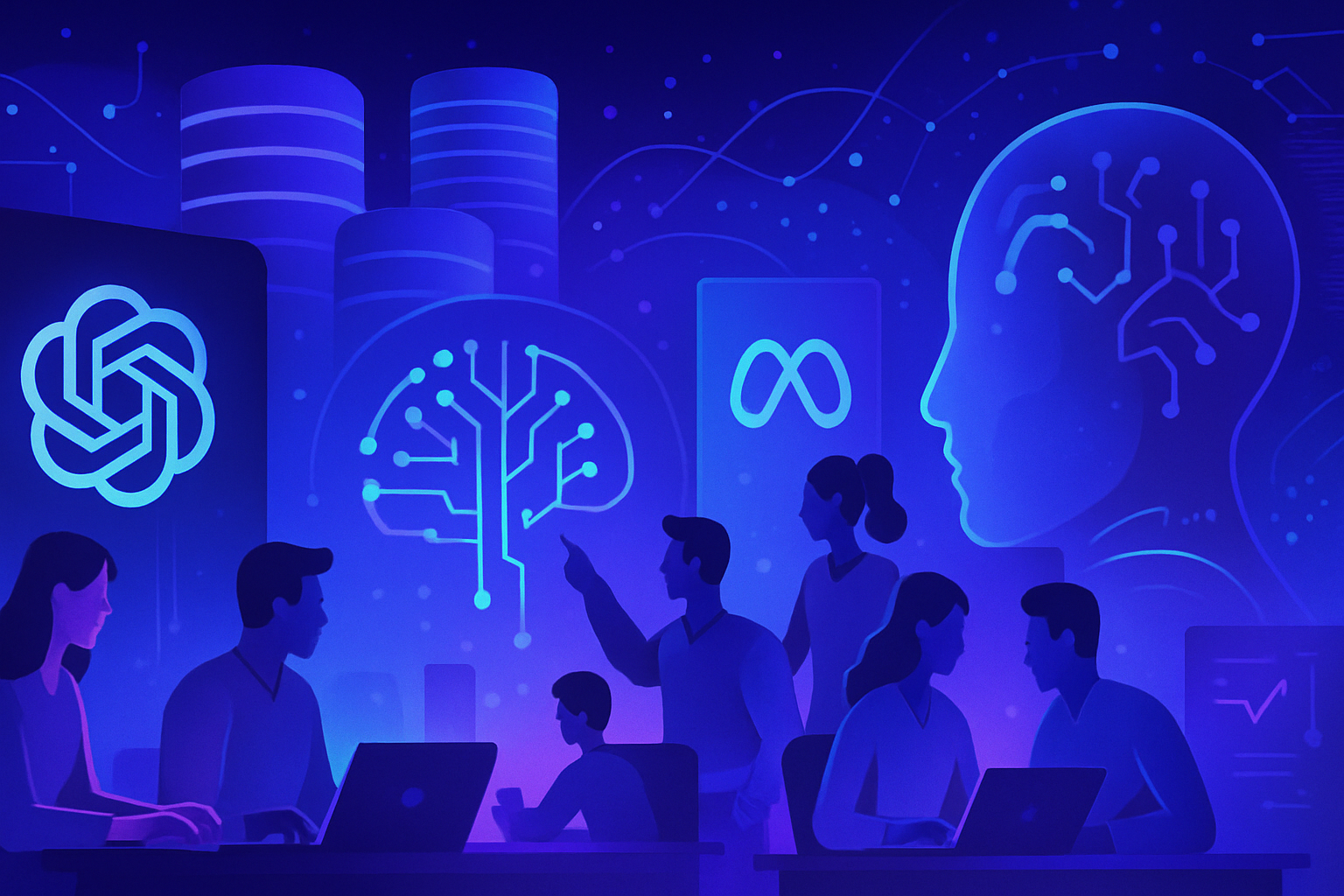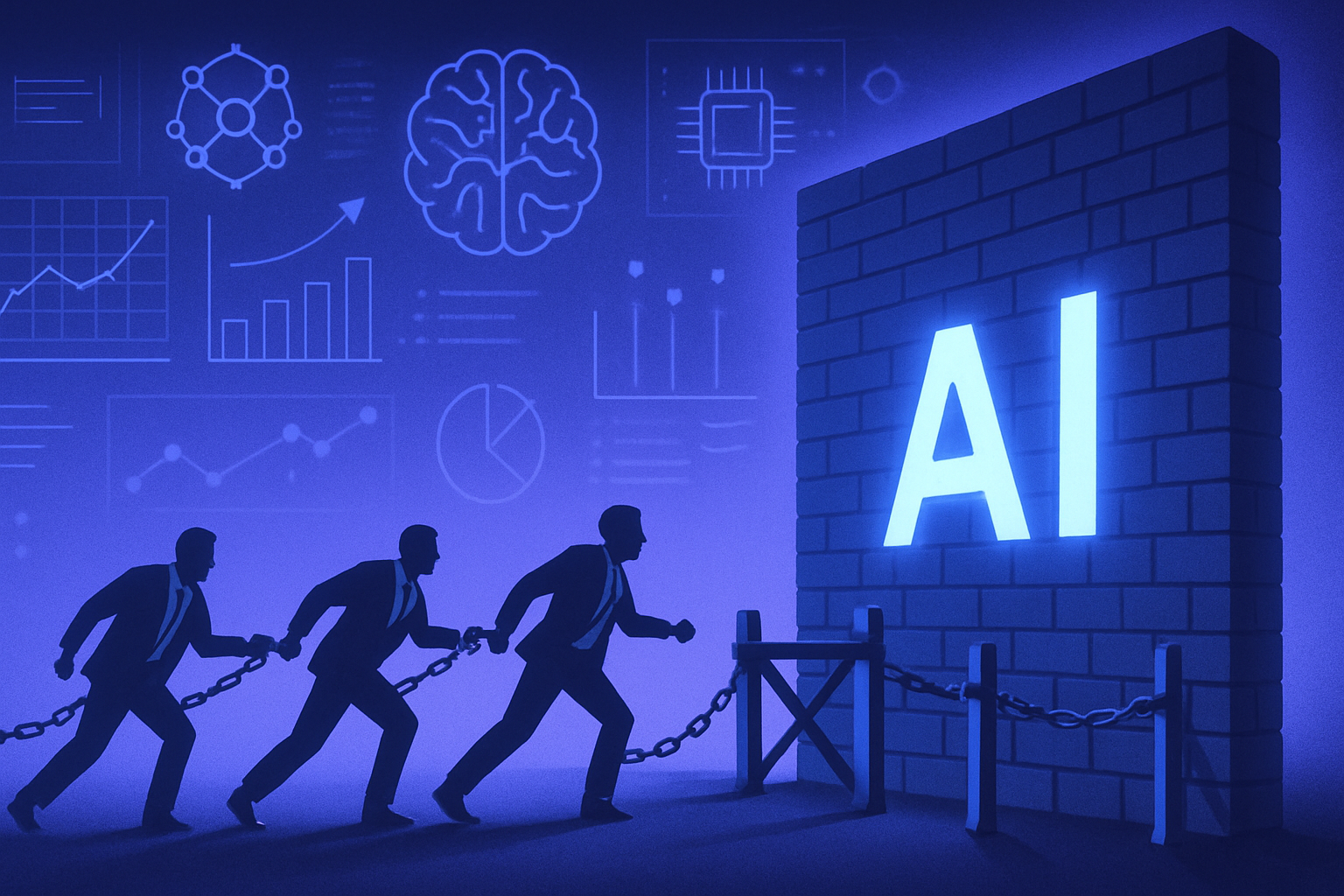The emergence of OpenAI’s latest language model, known as o1, represents an unprecedented revolution. This model, backed by Microsoft, redefines the paradigms of artificial intelligence by pushing the boundaries of what is possible. *AI startups in China* now find themselves at the dawn of fascinating new possibilities.
An innovation capable of transforming various sectors. Numerous innovative companies, including Moonshot AI and Baichuan AI, are exploring unprecedented entrepreneurial opportunities thanks to this advancement.
The power of reinforcement learning and scaling is emerging as essential catalysts, enabling breakthroughs in solving complex problems. *OpenAI’s models, like o1, mimic human thought*, making their use in the real world increasingly relevant.
Competition is intensifying, and companies with computational capacity will excel in this new landscape, thus opening up unexpected avenues for innovation.
The advancements of AI startups in China
At the recent Apsara conference in Hangzhou, Chinese artificial intelligence startups highlighted their initiatives aimed at designing massive language models. These efforts come on the heels of OpenAI’s announcement of its powerful language model, *o1*, backed by Microsoft. This model proves capable of solving complex tasks, fostering notable advancements in various fields such as science, coding, and mathematics.
The impact of OpenAI’s o1 model
Kunal Zhilin, founder of Moonshot AI, underscored the potential impact of the o1 model on different industries. According to him, this model could transform the entrepreneurial landscape of AI startups, thus creating new opportunities for innovation. Zhilin mentioned the importance of reinforcement learning and scalability for the future development of AI.
The laws of scale and performance
Zhilin explained the law of scale, which states that larger models trained on more data demonstrate better performance. This approach seems to propel AI capabilities to new heights. Startups with adequate computing resources will be able to innovate in algorithms and core AI models, thereby enabling a constant influx of new data.
The challenges of computational power
Jiang Daxin, general manager of StepFun, shared his agreement with Zhilin while emphasizing the challenges that computational power poses for many startups. U.S. trade restrictions complicate access to advanced semiconductors for Chinese companies. Computing requirements remain considerable, thus limiting the scope of innovation.
Chinese startups at the forefront of technology
An insider at Baichuan AI revealed that a handful of Chinese AI startups, such as Moonshot AI and Baichuan AI, are capable of making large-scale investments in reinforcement learning. These companies, dubbed the “AI tigers”, play a predominant role in developing next-generation language models, thus broadening the horizons of artificial intelligence.
Alibaba Cloud announcements
During this event, Alibaba Cloud also unveiled its new family of models Qwen 2.5. These models, which showcase impressive advancements in coding and mathematics, vary from 0.5 to 72 billion parameters and support nearly 29 languages, including Chinese, English, French, and Spanish. Specialized models such as Qwen2.5-Coder and Qwen2.5-Math are already garnering significant interest with over 40 million downloads on reputable platforms.
Innovations in content generation
Alibaba Cloud has enriched its product portfolio with a text-to-video model in its image generator, Tongyi Wanxiang. This model allows for the creation of videos in realistic and animated styles, with potential applications appearing in advertising and cinema. Additionally, Alibaba introduced Qwen 2-VL, its latest version of a visual language model. Optimized for mobile devices and robotics, this model processes videos exceeding 20 minutes and adapts to question-answering systems based on videos.
Towards the future of AI
The discussions held during the Apsara conference demonstrate undeniable momentum towards innovation in artificial intelligence. The implications of OpenAI’s o1 model and the initiatives of startups in China could well redefine the sector dynamics. The advancements made encourage anticipation of the development of increasingly efficient and adaptive solutions, thereby paving the way for a promising future for AI.
For more information on advancements in AI and big data, follow events such as AI & Big Data Expo, which will take place in Amsterdam, California, and London. This event brings together other renowned conferences.
Frequently Asked Questions about OpenAI’s latest language model and its impact on AI startups in China
What is the latest language model developed by OpenAI?
The latest language model from OpenAI is the o1 model, a pre-trained transformer designed to solve complex tasks and improve AI capabilities in various fields such as science, coding, and mathematics.
How can OpenAI’s o1 model benefit AI startups in China?
The o1 model has the potential to transform different industries, thereby opening new opportunities for Chinese AI startups by allowing them to develop innovations based on advanced algorithms and foundational AI models.
What challenges do AI startups in China face due to OpenAI’s o1 model?
Challenges include U.S. trade restrictions that limit access to advanced semiconductors necessary to leverage the o1 model, as well as the need for substantial computational power to drive innovations.
Why is reinforcement learning crucial for AI startups?
Reinforcement learning is essential as it allows companies to use newly generated data to continuously improve their models, especially when organic data sources dwindle.
What is the importance of computational power for AI startups using the o1 model?
Computational power is vital as it enables startups to leverage the capabilities of the o1 model and innovate effectively. Without sufficient computing resources, they struggle to compete in developing advanced AI models.
How does the o1 model compare to other language models on the market?
The o1 model stands out for its ability to solve complex problems and learn autonomously, allowing it to compete with other models while paving the way for significant advances in AI.
Which types of industries could benefit the most from OpenAI’s o1 model?
Industries that could benefit the most include technology, finance, health, and education, as they can use the model to automate tasks, improve decision-making, and personalize user experiences.
What are the future prospects for AI startups in China with the advent of the o1 model?
Future prospects are promising for AI startups, as OpenAI’s o1 model can enable them to explore new features, enhance user interaction, and generate innovative solutions tailored to market needs.






